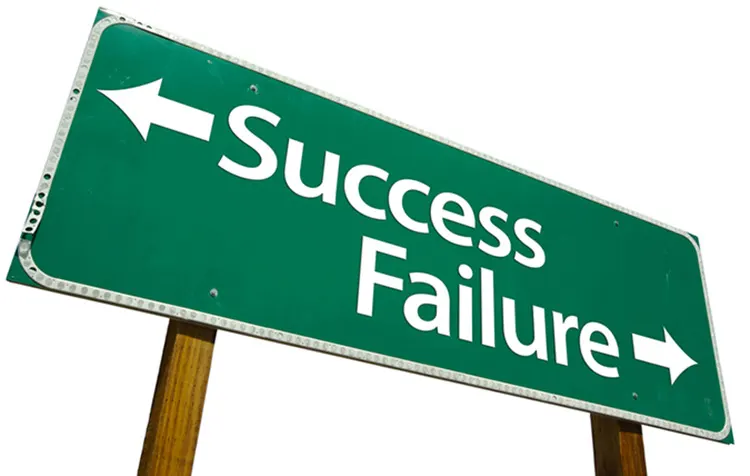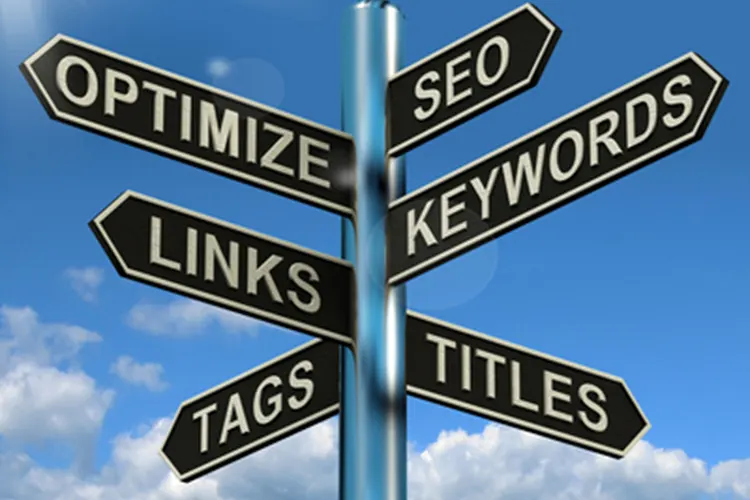Interrupt Marketing VS On-Demand Marketing
Understanding the difference can save you significant amounts of money, a lot of frustration, and improve your company’s reputation.

Interrupt Marketing
One of the best examples of interrupt marketing is a television commercial. A viewer is watching a program when the advertiser interrupts that program and shows a commercial message. Let’s take a closer look at the characteristics of this type of advertising.
From the viewer’s perspective:
Does the viewer like the experience? Heck no! Most people have built some tolerance for TV commercials over the years, but few, if any, enjoy them. The people that dislike the ads most are those who have zero interest in the product or service being advertised. After repeated and frequent interruptions, the viewer’s dislike can extend from the just the commercials to the sponsors that constantly interrupt their favorite programming. If you’ve ever wondered why so many ads nowadays tend to use comedy or attempt to entertain the viewer in some way while delivering their message, the purpose is to negate building this antipathy towards the sponsor.
From the advertiser's perspective:
What percentage of the viewers that see the ad will buy the product or service? The answer will vary, but; likely minuscule. The advertiser has no idea if a particular viewer has any interest whatsoever in the product or service being offered, and they don't care. The logic behind this type of advertising is that lots of people will view this message. And while only a tiny percentage of those people might be interested, the overall number will be high enough to justify the cost of the marketing effort. For decades, "interrupt" was the only type of advertising available. While no one likes it, it was tolerated by viewers in exchange for being able to watch their favorite TV programs.
The cost:
The cost per viewer impression is meager, which makes this platform ideally suited to do branding campaigns, making people aware that you exist. The expected response rate is also minuscule, so this platform typically doesn’t do well at creating immediate sales leads (demand generation) unless it's at a national level.
Modern-day examples of Interrupt Advertising:
Facebook Advertising is interrupt advertising. Whenever friends are discussing an unrelated topic and an ad (sponsored message) interrupts them because Facebook is being paid to show the advertisement.
Google News and other news feeds are a form of interrupt advertising. A news headline gets your attention, you click on it, and you end up on a page filled with lots of unrelated advertisements, and likely even an advertising video that starts playing automatically. Meanwhile, you’re struggling to shut off your sound and find the news article you came to the page to read. These media companies often create the “worst possible user experience you can find anywhere on the internet” and may eventually ruin interrupt advertising for many other market segments.
A recent Adweek (the advertising industry's Bible) survey found that more than 72% of the people surveyed used an ad blocker on their internet browser because this form of advertising has become so obnoxious.
Direct Mail is a form of interrupt advertising-whenever you receive unsolicited / junk mail.
Most Forms Of Email Marketing is interrupt advertising. While very popular (especially with inexperienced marketers), much of this is just SPAM. Very few companies use email with any level of effectiveness. The exceptions are those companies the build “true opt-in” memberships and deliver related content that their subscribers expect, and look forward to receiving it. Most people like email marketing because it's free (or almost free) and extremely easy to utilize.
The common denominator of Interrupt Marketing is
only a tiny percentage of people are even semi-interested,
a more significant portion of people tolerate it,
but the majority don’t like it.
On-Demand Marketing
Google Search is an excellent example of On-Demand Advertising. Let's say someone is searching for the term "patio furniture." The fact that they are searching for patio furniture would indicate that they have an active interest in patio furniture. Now let's say your advertisement for patio furniture shows up on the search results page. Your ad is much more likely to be accepted as helpful by that person as compared to being an annoyance because you are actively aiding this person in their search efforts as compared to interrupting them.
However, if your ad for house painting showed up on this same search results page, you will now be an interruption, not an aid in their search process. Your ad is not related to what the searcher is looking for. You interrupted their interest in patio furniture with your advertisement for house painting.
Yelp is another example of On-Demand Advertising - Provided the user searched for house painting, and your name comes up as a house painter; this is another excellent example of on-demand marketing.
From the viewer’s perspective:
Does the viewer like the experience, YES! You are helping them achieve their goal; you are aiding them in their process.
From the advertiser's perspective:
Every person you get in front of is looking for the product or service you sell right now! They are the perfect audience at that exact moment in time. People will move in and out of this audience over time.
The Cost:
Some people argue that on-demand marketing is much more expensive than interrupt marketing. These same people would say it's insane to pay $2 per click for someone to click on your ad for patio furniture when that person searches for the term "patio furniture." I would argue that I'd much rather pay $2 for someone who is actively looking for patio furniture to see my ad than I would be to spend that same $2 for a hundred people to see my ad when not knowing whether any of those people currently have any interest whatsoever in buying patio furniture.
While interrupt marketing will get you in front of a lot more people, on-demand marketing should yield a much higher percentage of "real" potential customers. Remember, the only thing that matters in marketing is the results. The cost per potential customer (qualified lead) is the metric that should be measured/compared when determining which works better for you.
The Lines Get Blurred:
There are lots of situations where the lines are not so clear. For example, let’s say you manufacture customized leather pouches for motorcycles. Let's also say that you decide to attend a motorcycle convention as a vendor. Someone could argue that this is an example of on-demand marketing because every attendee should have a level of interest in motorcycles, and your product is directly associated with motorcycles.
Another person could argue that this is not an example of on-demand marketing because every attendee is not interested in leather pouches for their motorcycle. I would agree that the lines are not crystal clear here, and I don't want to debate this type of situation for hours. However, I would endorse the fact that this is not a perfect example of on-demand marketing. Still, this type of advertising is likely to be much more effective and much more accepted than traditional interrupt marketing would ever be. I would also point out that it is very reasonable that you will not annoy any of the attendees as they walk by your booth even if they are not interested in your leather pouches.
The common denominator of On-Demand Marketing is
the viewer has an active interest in the product or service you are advertising.
Most people would say the viewer is in the "buying cycle" for your product or service at the time your ad shows up.
Summary
Each form of marketing has its unique value, depending upon the goals of your marketing campaign.
If lots of exposure is a primary goal, you’ll likely see better results from Interrupt Marketing, however, be careful not to patronize ad sources that sacrifice the “user experience” in exchange for earning additional revenue.
If you’re looking to create immediate sales activity, you’re often better off using On-Demand Marketing. While your cost per impression will be higher, your cost per lead should be lower, and your phone should start to ring sooner and with more frequency.
Prestigious brands such as Apple that don’t want to annoy their potential customers typically shy away from interrupt advertising because of the potential of building antipathy towards the advertiser.
Determining which type is best for you, should be detailed in your marketing strategy. learn more
BTW:
You came to this article to learn more about Interrupt VS On-Demand Marketing, so I guess this article is an example of On-Demand Marketing, right?

Are You Wasting Your Marketing Money?
No More Excuses, Your Results Should Be 100% Measurable.Marketing should be very straightforward and predictable. The marketing process is no longer filled with emotional, gut-feeling guesses; it’s now scientific, and the analytics don’t lie.
We Are Small Business Marketing Experts.
Advertising On Google Or Facebook?
You’re Likely Overspending And Missing The Target.Advertisers work hard to make their systems incredibly easy to use. Some proudly claim that their artificial-intelligence-based recommendations make it so simple to set up that anyone can do it, and your ads can be online in just a few minutes.
These same automated systems are the most significant source of
dismal performance and exorbitant costs.
The Top Three Causes of Wasted Pay Per Click (PPC) Money.
Read More

Build A Facebook Page Or A Website
Which Is A Better Choice For My Business?Generally speaking, you might want to consider that Facebook and almost every other social media company earns its revenue by showing advertisements.
Now realize that driving a potential sales lead to ANY social media site will likely introduce them to competitors that they never knew existed.
Read MoreYou Spent A Fortune On A New Website, But
You Get No Sales Leads!Lots of web designers are capable of building a gorgeous website. Still, very few also possess the marketing competency to develop a comprehensive strategy for capturing sales leads, and the ability to build that lead strategy into their pretty website design. We can help you transform your existing website.
Let us review your website at no cost. We will make recommendations and show you the impact we can make on your business.
Schedule Your Free Website Audit.
Schedule Now
Is Search Engine Optimization (SEO)
A Smart Investment For A Small Business?
QUESTION: If you’re going to start with SEO as your strategy, how do you know which keyword phrases are most effective at placing a genuine sales lead on your website?
Please Note:
I didn’t ask which are the most popular phrases; I wondered which are the most “effective”.
Building Your Own Website
A Smart Idea Or Not?
Building your own website means, you’ve just entrusted every visitor’s first impression of your company to a person who most often has: no real web design skills, limited if any marketing skills, no content writing or graphic arts skills, and very likely no knowledge of how to manage a user’s experience on a website.
This sounds like it could be a recipe for disaster.

Need An Executive-Level Marketing Person (Part-Time)
Wish You Had Access To A CMO, On An “As Needed” Basis?Our Ask A CMO Service is perfect when you require a senior-level marketing person, BUT that need is temporary or even just part-time.
Perhaps you need help developing a brand strategy, marketing strategy, or maybe you’ve created a marketing plan, and you’re unsure of the viability of this plan, that’s precisely the type of situation we created this service to fulfill.
Let’s Discuss Your Specific Situation, And How We Can Help You.
Contact Us
